|
St. Augustine, Florida
Page3 Photos/text this page courtesy of Dale Cox, Fort Smith, AR |
||
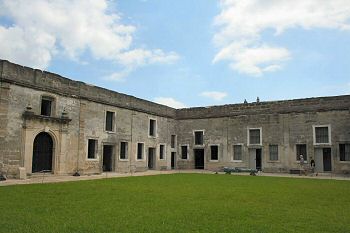 |
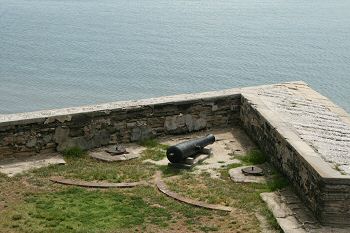 |
|
|
(7-2008) Enlarge This is a view of the interior of the Castillo. The rooms visible here were used during the variour 18th century attacks on the fort, as well as by British troops during the American Revolution, U.S. troops during the Second Seminole War and by both Union and Confederate forces during the Civil War. Union troops also lived in tents pitched on the upper gundeck of the fort. The famed Seminole chief Osceola was briefly imprisoned in the Castillo following his capture under a white flag near St. Augustine |
(7-2008) Enlarge This is a view of the demibastion of the American water battery at Castillo de San Marcos. Constructed in 1840-1842 when the fortress was known as Fort Marion, the water battery was its primary Civil War defense. When state troops occupied the fort in January of 1861, they found 10 pieces of fairly modern artillery emplaced here. Two companies of Confederate troops occupied the fort until the spring of 1862, prepared to use the guns against any enemy warship that might try to enter the harbor |
|
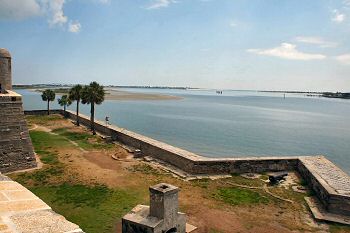 |
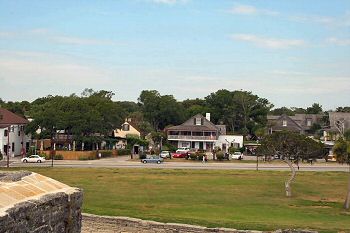 |
|
|
(7-2008) Enlarge This is a wider view of the water battery at Castillo de San Marcos (Fort Marion) that also shows the primary entrance to Matanzas Bay. Due to the narrow nature of the bay, the 10 pieces of artillery placed here were a highly effective defense for the harbor. The guns included Columbiads and rifled 32-pounders |
(7-2008) Enlarge This view of the historic city of St. Augustine was taken from the gundeck of the Castillo. As the photograph shows, the city was literally under the shadow of the walls of the fort. The oldest continually occupied city in the continental United States, St. Augustine was founded in 1565 (42 years before Jamestown and 55 years before the Pilgrims landed at Plymouth Rock) |
|
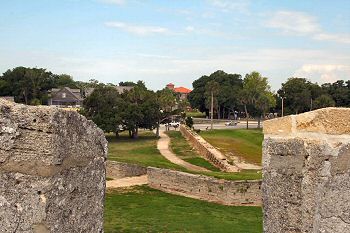 |
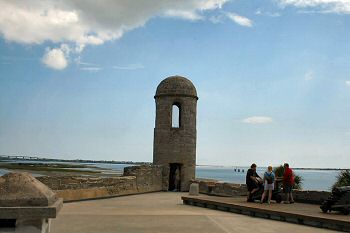 |
|
|
(7-2008) Enlarge This photograph, taken from the gundeck of the Castillo looking west, shows a section of the Cubo Line, the northern wall of the historic city. The original city gates are behind the trees visible at the end of the restored section of the wall. Built during the 1700s, the Cubo line stretched across the northern end of the city from the Castillo to a redoubt on the shores of the San Sebastian River. Repaired several times over its history, the wall was still intact at the time of the Civil War but was never attacked by Union or Confederate troops |
(7-2008) Enlarge This is a view of the "bell tower" on the northeast bastion of the fort. The tower was used signal the residents of the city in the event of an attack. Beyond the tower can be seen the main entrance from the Atlantic Ocean to Matanzas Bay. Any Union ship attempted to negotiate the inlet would have to come in under almost point blank range of the guns in the fort's water battery. The Union never attempted to attack the fort, but when they showed up during the Spring of 1865 to occupy St. Augustine as the Confederate troops there withdrew, they found the inlet virtually impossible to navigate and could only approach the city using small boats |